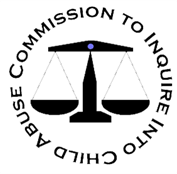The Commission to Inquire into Child Abuse
Establishment of the Commission
The Commission was established on 23 May, 2000, pursuant to the “Commission to Inquire into Child Abuse Act 2000” and given three primary functions:
- to hear evidence of abuse from persons who allege they suffered abuse in childhood, in institutions, during the period from 1940 or earlier, to the present day;
- to conduct an inquiry into abuse of children in institutions during that period and, where satisfied that abuse occurred, to determine the causes, nature, circumstances and extent of such abuse; and
- to prepare and publish reports on the results of the inquiry and on its recommendations in relation to dealing with the effects of such abuse.
The Commission had no role in relation to financial compensation. That function rested with the “Residential Institutions Redress Board”.
Structure of Commission
The Commission heard evidence through two separate committees – the Investigation Committee and the Confidential Committee. The Chairperson of the Commission, Mr. Justice Ryan, was a judge of the High Court and also chairperson of the Investigation Committee. The ordinary members of the Commission, who sat on either (but not both) committee, were drawn from various disciplines. The Commission also had a number of administrative and legal staff, paid for by the Department of Education & Science.
2005 Act – Functions of the Commission
The “Commission to Inquire into Child Abuse (Amendment) Act 2005” gave effect to the recommendations of the report of the Government of the “Review Group on the Commission to Inquire into Child Abuse” and the report and subsequent recommendations of Mr. Justice Ryan, on the workings of the Commission. The new provisions allowed for extension of the Commission’s functions, by including a duty on the Commission to inquire into the manner in which children were placed in institutions and the circumstances in which they continued to be resident there. The Act also removed the obligation on the Investigation Committee to hear all complainants and gave it a discretion as to which witnesses it considered should be called to a full hearing, to ensure that the inquiry’s functions are fulfilled.
Types of abuse
The Commission had a mandate in relation to four types of abuse:
- Physical abuse – the willful, reckless or negligent infliction of physical injury on, or failure to prevent such injury to, the child;
- Sexual abuse – the use of the child by a person for sexual arousal or sexual gratification of that person or another person;
- Neglect – failure to care for the child which results, or could reasonably be expected to result in serious impairment of the physical or mental health or development of the child, or serious adverse effects on his or her behaviour or welfare;
- Emotional abuse – any other act or omission towards the child which results, or could reasonably be expected to result in serious impairment of the physical or mental health or development of the child, or serious adverse effects on his or her welfare.
Types of institution
This included a school, an industrial school, a reformatory school, an orphanage, a hospital, a children’s home and any other place where children were cared for other than as members of their families.
A “child” was deemed to be a person who had not attained the age of 18 years at the relevant time.
Complainants
A witness (complainant) could choose to give evidence to the Investigation Committee or the Confidential Committee, but not both. In relation to the Investigation Committee, evidence was given at either (or both, in some cases) full hearing of the Committee, or interview with members of its legal team.
In addition to being offered a hearing by the Commission and its Committees, counselling by a dedicated counselling service was set up by the Department of Health and Children and was provided through the Health Boards was available for victims of abuse.
The Commission and its Committees benefited from the kind of powers and protection which a court would have including privilege for witnesses; compellability of witnesses; discovery of documents; taking evidence on oath and offences for failure to co-operate or for obstruction.
View a diagram that explains how a victim of abuse was heard through the Commission’s work.
Additional Functions/Vaccine Trials
The Commission was given the additional functions under the Commission to Inquire Into Child Abuse Act, 2000 (Additional Functions) Order, 2001 (S.I. No. 280 of 2001) to inquire into-
a) the 3 vaccine trials referred to in the Report of the Chief Medical Officer entitled “Report on Three Clinical Trials Involving Babies and Children in Institutional Settings 1960/1961, 1970 and 1973”, and
b) any other vaccine trial found by the Commission to have taken place in an institution between 1940 and 1987 based on an allegation by a person who was a child in that institution that he or she was the subject of such a vaccine trial.
Delays
There were a number of legal challenges and reviews of the Commission’s work. These have been well documented already and are set out in detail, in the Commission’s “3rd Interim Report”, published in January, 2004.
Publication of the Report
On completion of its work the Commission published a report directly to the general public on 20 May, 2009, based on the reports of its Committees. The Report identified institutions in which abuse occurred and the people responsible and made findings in regard to management and regulatory authorities. The Commission in the Report also made recommendations on measures to alleviate the effects of abuse on victims and to prevent future abuse in institutions. The report was also posted to the Commission’s website.
For more detail on the background to and establishment of the Commission, please see its “3rd Interim Report”, which can be found on the website under “Publications”.
